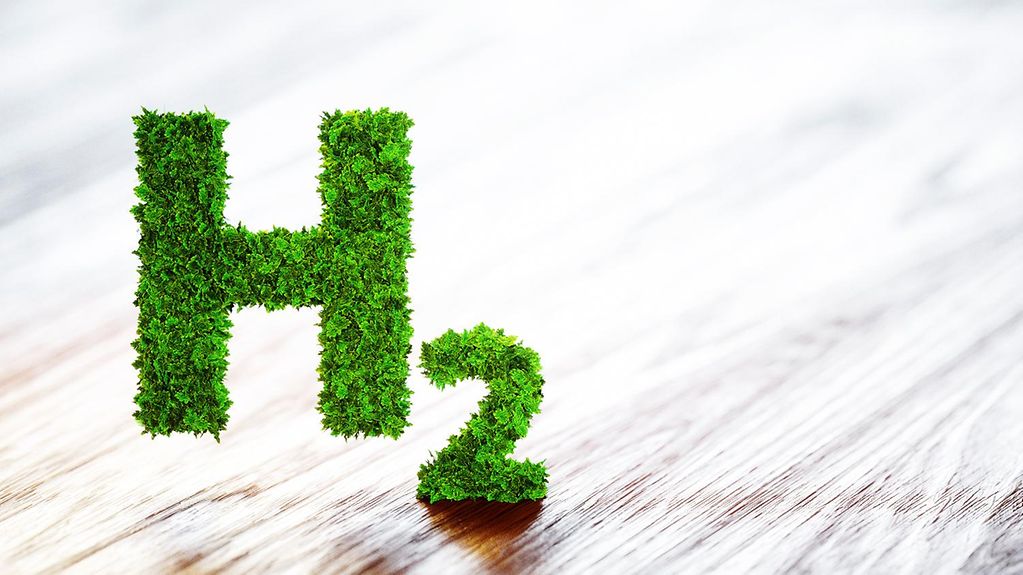Power Station Strategy to develop hydrogen power stations
Germany plans to become a climate-neutral industrial country by 2045. By adopting its Power Station Strategy, the Federal Government is creating the conditions for steel and cement to be produced using green hydrogen in the future. Adequate electricity supplies are to be ensured – even on cloudy and still days.
3 min reading time

The Power Station Strategy creates the framework for investments in modern, highly flexible and climate-friendly power stations that are able to use hydrogen in the future.
Photo: Getty Images/iStockphoto/Petmal
New gas-fired power stations which can be run on hydrogen are to be built to allow German industry to produce steel, cement and other energy-intensive products with zero carbon emissions by 2045. The new gas-fired power stations are to run on natural gas for a transitional period only, and are expected to switch from natural gas to green hydrogen between 2035 and 2040. The exact switch-over dates are to be set in 2032.
Federal Chancellor Scholz, Minister of Economic Affairs Habeck and Minister of Finance Lindner have agreed on the essential elements of a new Power Station Strategy. In a post on X, government spokesperson Steffen Hebestreit said: "With this Power Station Strategy , the German government is paving the way for investments in a safe, climate-friendly electricity supply."
Reliable power supplies in periods of low sunshine and wind
With its Power Station Strategy, the Federal Government is ensuring that enough electricity is produced even if there is little energy available from solar and wind power. The strategy involves building new power stations at so-called system-critical locations, primarily at nodes serving large energy-intensive industrial complexes.
Giving investors confidence when planning for the future
By implementing these strategic elements, the Federal Government is giving investors confidence when planning for the future. The Federal Government will use the Climate and Transformation Fund to boost investment in power stations, and is expected to adopt the Power Station Strategy by this summer. Ministerial agreement on the key elements creates the preconditions for the necessary investments.
Plans for rapid tendering process
The agreement on the Power Station Strategy lays the groundwork for the electricity generating industry to invest in new "H2-ready" gas power stations that can be powered with hydrogen. The Federal Government plans to call for bids to build new H2-ready gas power stations with a capacity of up to four blocks of 2.5 gigawa tts each in the near future. The rapid call for bids is aimed at kickstarting the expansion of the hydrogen industry as quickly as possible.
Under the strategy, new power stations will run with natural gas at first and later on all “colours” of hydrogen and green hydrogen wherever possible. The strategy plans to complete the conversion of the new power stations by around 2035.
Promoting affordable electricity prices
The Federal Ministry for Economic Affairs is working hard on the new plans which are essential for the future electricity market. Renewable electricity should stay safe and affordable in the future. What is certain is that the price of carbon for fossil fuels such as coal and natural gas which harm the climate, will continue to rise.
The Federal Government is in talks with the European Commission to create a capacity market for the future, and expects to present its plans by the summer. This capacity market is expected to start in 2028. In order to prevent interruptions to electricity supplies, the hydrogen power stations are to remain on standby for periods of low generating capacity in the future.
The Federal Government is open to other technologies beyond hydrogen. It also supports research and development in fields such as CCS (Carbon Capture and Storage) and nuclear fusion.
Renewable energy is taking off
The development of wind and solar energy has gained a lot of momentum. In 2023, half of electricity consumption came from renewable energy, which has also been playing an increasingly important role in electricity production, as its share of total electricity generation rose to 56 percent in 2023. Construction of new power grids is also progressing, thanks to the Federal Government laying the foundations over the past two years.